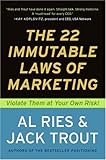
Every morning, I climb on the Express bus which takes me in to Dublin City Centre where I work. It’s an average journey of about an hour, although this can vary by as much as 50% depending on traffic, weather, and the whims of rioters. This can be a miserable journey at the best of times, but this morning there was the additional annoyance of a new driver – one who insists on following the journey plan to the letter of the law.
There are a time and a place for rules. We can’t have the passengers lying on the floor, playing football, or sitting on the roof. On the other hand, there are minor infractions which lend themselves to a better service; letting passengers on if the bus stops at a red light (if it’s safe to do so), or letting passengers off where they need to as opposed to where the planner dictates.
The latter example can almost become an unwritten rule if every driver follows it – an implied contract between the company and its customers. And so it was this morning, as around 20 passengers lined up to exit at a stop that isn’t really on the plans even though the bus stops there every day. The driver pointed to his checklist, and the customers were disappointed.
My first thought on the situation was that it was a case of poor positioning. (The fact that I had just finished Al Ries and Jack Trout’s two excellent treatises on effective marketing “The 22 Immutable laws of marketing” and “Positioning
” back-to-back may have had some influence). The driver has been trained to drive the bus from A to B; for the service the customers expect the bus company should have been positioning him to see himself as the guy who gets passengers into work on time. Positioning can apply to people, products, negotiations, and any other situation where you’re dealing with human beings, and it’s a powerful technique to positively influence your clients’ opinions of you.
One of the core messages of positioning is that your brand and the brand of the competition occupy space in your prospective client’s mind. How you influence their choice depends almost entirely on successfully relating your marketing efforts to what they already believe about your product and that of your competition.
This key message is at the heart of “positioning”, with “The 22 immutable laws of marketing” holding a supporting position by listing the optimal laws that you should follow, and provides examples of where these laws were not followed to a company’s detriment. “Positioning” reinforces these 22 laws, but unfortunately uses almost the exact same examples to make it’s points. Fortunately, these examples are compelling.
Some concepts covered (From both books):
- People rank things in terms of ladders – If you’re not at the top, you need to position yourself relative to the top. Never attempt to go head-to-head with a competitor who already owns the position in the prospect’s mind.
- Avoid the “Line Extension Trap” – Companies with a strong brand name (E.g. Coke) often add new product lines such as “Cherry Coke”, or “Lemon Coke”. These extensions initially result in more sales, but dillute the original brand in the long run. It is more effective to create a new brand name and market the new idea with it.
- The Law of success – Success leads to arrogance, and arrogance leads to failure. Most marketing plans are long-term investments, there’s no point changing direction mid-stream – but this is often what the arrogant marketeer does when they believe that it was their input, and not the long term plan that won the success.
- The Law of candor – When you admit to a negative, the prospective client may turn it into a positive. Admitting that your product is not the all-singing, all-dancing gadget that will transform your customers lives is a refreshing change in a world where advertising is a constant fog.
- The Law of the opposite – If you’re aiming for second place, your strategy is determined by the leader. Coke has traditionally occupied a position as a cola for older people. Pepsi successfully positioned itself in contrast to this position, as the choice “for a new generation”.
Where “positioning” really shines is towards the end of the book, where the authors cover example cases where they have been hired to reposition products. It’s an interesting exercise to see where their inspiration comes from, and useful mental practice to attempt to market these products before they explain their own results . Also, there are tips on repositioning your own career or your business, selling the idea that positioning is flexible for any “product”.
With that said, I would recommend “The 22 immutable laws of marketing” over “positioning” if you only had enough money in your pocket for one book. The point format of the former book is succinct and memorable, and the examples covered in both books are almost identical. If you were feeling sneaky, you might read the last two chapters online or in the bookshop.
Addendum: If marketing your business is of particular interest to you, I would also recommend JD Moore’s “Marketing Comet” weblog.
Addendum #2: Eric Sink has done an in-depth geeks guide to the 22 immutable laws of marketing.